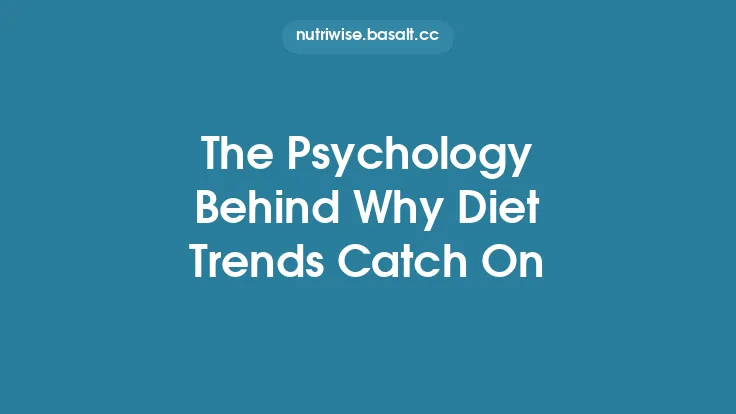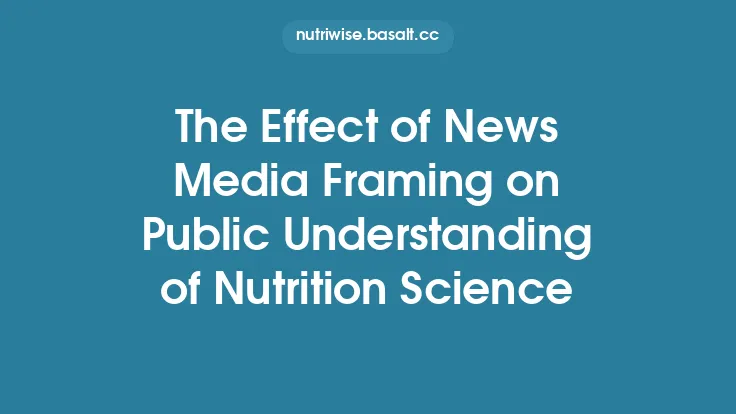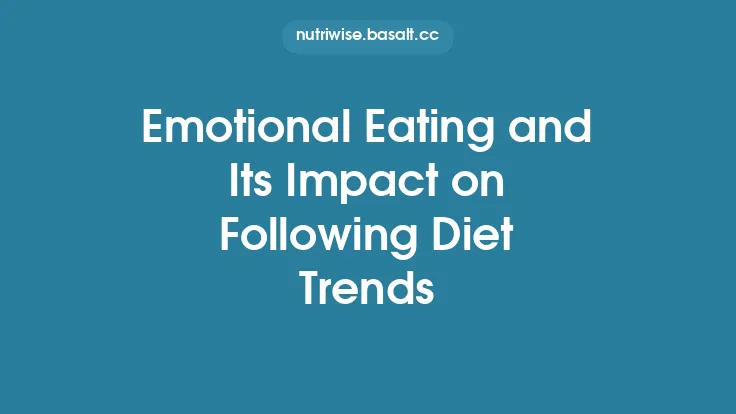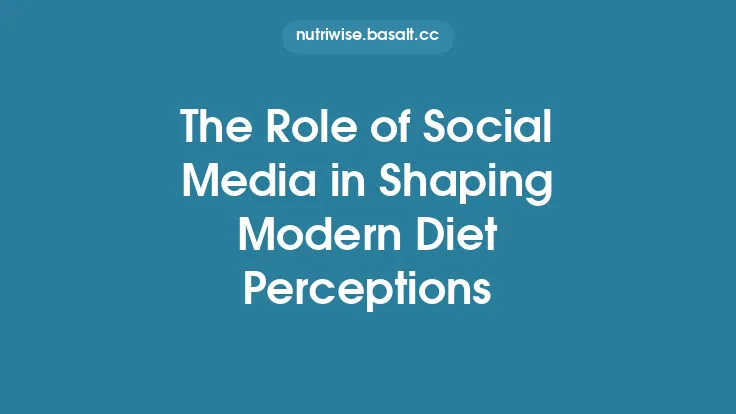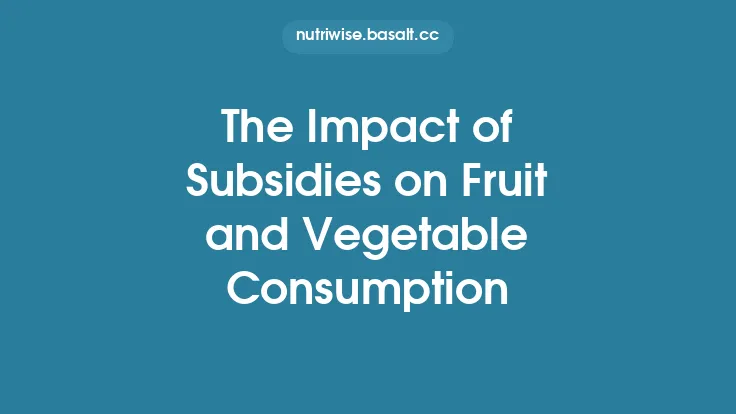The relationship between celebrity culture and the way people think about food has been a fixture of popular life for decades. From movie stars touting low‑fat meals in glossy magazine spreads to athletes appearing on cereal boxes, the endorsement of diet products by well‑known figures creates a powerful conduit through which nutritional ideas travel. This article dissects the mechanisms, history, and measurable outcomes of celebrity endorsements on diet trends, while also highlighting the responsibilities of marketers, regulators, and consumers in navigating this terrain.
The Mechanics of Celebrity Endorsement in Nutrition Marketing
Celebrity endorsement operates at the intersection of three core marketing concepts: source credibility, meaning transfer, and social identification.
- Source Credibility – A celebrity’s perceived expertise, trustworthiness, and attractiveness directly affect how persuasive a message is. In the context of diet products, expertise may be inferred from an athlete’s performance record or a Hollywood star’s “healthy lifestyle” narrative, even when the individual lacks formal nutrition training.
- Meaning Transfer – The symbolic meanings attached to a celebrity (e.g., glamour, vitality, discipline) are transferred to the endorsed product. When a well‑known figure is associated with a low‑calorie snack, the snack inherits the aura of “slimness” and “self‑control” that the celebrity embodies.
- Social Identification – Consumers often see celebrities as aspirational figures. By aligning themselves with a celebrity’s diet regimen, they feel a sense of belonging to a desirable social group. This identification can be especially potent when the celebrity’s public persona resonates with a target demographic’s values (e.g., family‑oriented actors for parents, high‑performance athletes for fitness enthusiasts).
These mechanisms are amplified by the media channels that carry the endorsement—television commercials, print ads, billboards, and, increasingly, curated brand‑sponsored events. The synergy between the celebrity’s image and the media platform determines the reach and depth of the message.
Historical Evolution of Celebrity‑Driven Diet Campaigns
| Era | Notable Campaigns | Media Channels | Core Message |
|---|---|---|---|
| 1950s‑1960s | “Marlon Brando’s Low‑Fat Breakfast” (cereal) | Print magazines, radio | “Start your day like a star” |
| 1970s‑1980s | “Arnold Schwarzenegger’s Protein Power” (supplements) | Television, gym posters | “Build muscle the champion way” |
| 1990s | “Catherine Zeta‑Jones’ Light‑Calorie Pasta” | TV, supermarket shelf‑talkers | “Indulge without guilt” |
| 2000s | “Jennifer Aniston’s Mediterranean Diet” (cookbooks) | TV infomercials, book tours | “Hollywood’s secret to longevity” |
| 2010s‑2020s | “LeBron James’ Heart‑Healthy Snacks” (snack line) | TV, high‑visibility event sponsorships | “Fuel performance like a pro” |
The trajectory shows a shift from simple product placement to more sophisticated, narrative‑driven campaigns where the celebrity’s personal story becomes integral to the diet message. While early efforts relied heavily on print and broadcast, later campaigns have leveraged cross‑platform integration—still distinct from the “digital influencer” model that focuses primarily on social media micro‑targeting.
Psychological Drivers Behind Celebrity Influence
- Halo Effect – Positive feelings toward a celebrity spill over to the endorsed product, leading consumers to assume the product is healthier or more effective than it may be.
- Availability Heuristic – High‑visibility endorsements make the associated diet concept more mentally accessible, prompting consumers to recall it when making food choices.
- Normative Social Influence – When a celebrity publicly adopts a diet, it creates a perceived social norm, encouraging others to follow suit to avoid feeling “out of step.”
- Self‑Perception Theory – Individuals infer their own attitudes from observed behaviors. Seeing a beloved star follow a particular diet can lead fans to conclude that the diet aligns with their own values, reinforcing adoption.
These drivers are not mutually exclusive; they often operate simultaneously, reinforcing the overall persuasive impact.
Quantifying the Impact: Metrics and Research Findings
Researchers employ a blend of experimental designs, survey analytics, and sales data modeling to gauge the effect of celebrity endorsements on diet trends.
- Recall and Recognition Tests – Controlled experiments show that participants exposed to a celebrity endorsement recall the product name 30‑45% more often than those exposed to a non‑celebrity ad, even when the visual content is identical.
- Purchase Intent Surveys – Meta‑analyses of consumer panels indicate a 12‑18% lift in purchase intent for diet products featuring a high‑credibility celebrity versus a generic spokesperson.
- Sales Lift Analysis – Longitudinal sales data from major retailers reveal an average 23% increase in unit sales during the first three months of a celebrity‑backed campaign, with a decay rate of roughly 5% per month after the endorsement period ends.
- Behavioral Tracking – Wearable device data linked to marketing exposure (with consent) have shown modest but statistically significant changes in daily caloric intake among participants who reported following a celebrity’s diet plan, typically a reduction of 150–250 kcal per day over a six‑week period.
These findings underscore that while celebrity endorsements can drive short‑term market performance and modest behavioral shifts, the magnitude of long‑term dietary change remains limited without complementary educational components.
Case Studies of Notable Celebrity Diet Endorsements
1. The “Supermodel Slim” Campaign (1998)
- Celebrity: A top runway model
- Product: Low‑calorie meal replacement shakes
- Outcome: Initial sales surged 40% within the first quarter; however, a subsequent FDA warning about unsubstantiated weight‑loss claims led to a rapid decline in consumer trust and a 25% drop in sales within six months.
2. “Champion’s Fuel” Protein Bars (2005)
- Celebrity: A celebrated Olympic sprinter
- Product: High‑protein snack bars marketed for “performance recovery”
- Outcome: Independent lab testing confirmed protein content but revealed added sugars exceeding recommended limits. Consumer backlash prompted the brand to reformulate the product, illustrating the risk of credibility loss when scientific scrutiny uncovers inconsistencies.
3. “Heart‑Smart Snacks” (2018)
- Celebrity: A globally recognized basketball star
- Product: Low‑sodium, whole‑grain snack line
- Outcome: The campaign incorporated a public‑health partnership with a cardiovascular foundation, resulting in a sustained 15% sales lift over two years and measurable improvements in consumer awareness of sodium guidelines.
These cases highlight the spectrum of outcomes—from short‑lived hype to enduring brand equity—depending on the alignment between the celebrity’s image, product formulation, and the rigor of health claims.
Potential Pitfalls and Misinformation Risks
- Over‑Generalization of Personal Regimens – Celebrities often share anecdotal diet experiences that may not be universally applicable. When these narratives are presented as universal solutions, they can mislead consumers with differing metabolic or health profiles.
- Conflict of Interest – Financial incentives can bias a celebrity’s public statements about a product’s efficacy, creating a hidden agenda that undermines scientific objectivity.
- Regulatory Gaps – While the Federal Trade Commission (FTC) and the Food and Drug Administration (FDA) regulate false advertising, enforcement can lag behind fast‑moving marketing campaigns, allowing unverified claims to proliferate temporarily.
- Brand Dilution – Over‑exposure of a celebrity across multiple diet products can erode perceived authenticity, reducing the persuasive power of future endorsements.
- Psychological Reactance – Some consumers may resist overt persuasion attempts, especially if they perceive the endorsement as manipulative, leading to a “backfire” effect where the intended behavior is rejected.
Understanding these risks is essential for marketers aiming to maintain credibility and for consumers seeking to make evidence‑based dietary choices.
Regulatory Landscape and Ethical Guidelines
- FTC Endorsement Guidelines – Require clear disclosure of any material connection between the celebrity and the product. Endorsers must substantiate any health claims with competent and reliable scientific evidence.
- FDA Food Labeling Regulations – Prohibit false or misleading statements about a product’s nutritional benefits. Claims such as “clinically proven to reduce body fat” must be supported by peer‑reviewed research.
- Self‑Regulatory Codes – Industry bodies (e.g., the Nutrition Business Journal) have established best‑practice frameworks encouraging transparent communication, third‑party verification of nutritional content, and avoidance of “miracle‑cure” language.
- Ethical Considerations – Ethical marketing emphasizes the duty to protect vulnerable populations (e.g., adolescents, individuals with eating disorders) from potentially harmful diet messaging. Celebrities with a public health platform are encouraged to collaborate with qualified nutrition professionals when crafting endorsement content.
Compliance with these standards not only mitigates legal exposure but also sustains consumer trust over the long term.
Strategies for Consumers to Evaluate Celebrity‑Endorsed Diet Claims
- Check the Source of Evidence – Look for citations of peer‑reviewed studies, clinical trial data, or statements from accredited nutrition organizations. Vague references (“studies show…”) are red flags.
- Assess Nutritional Transparency – Examine the product’s Nutrition Facts label. Verify that the macronutrient and micronutrient claims align with the label’s actual values.
- Consider Personal Health Context – A diet that worked for a celebrity may not suit your metabolic rate, medical conditions, or activity level. Consult a registered dietitian before adopting a high‑profile regimen.
- Look for Independent Reviews – Third‑party testing labs, consumer watchdog groups, and reputable health publications often provide unbiased assessments of diet products.
- Beware of “All‑Or‑Nothing” Language – Phrases such as “only eat this for rapid weight loss” are typically unsustainable and may indicate a marketing ploy rather than a balanced nutritional approach.
By applying these filters, consumers can separate genuine, evidence‑based recommendations from hype-driven endorsements.
Future Directions: Emerging Trends in Celebrity Nutrition Partnerships
- Evidence‑Based Co‑Creation – Increasingly, celebrities are partnering with research institutions to develop products grounded in clinical data, thereby enhancing credibility.
- Hybrid Media Campaigns – While traditional TV and print remain valuable, future endorsements will likely blend live events, limited‑edition product drops, and strategic placement in health‑focused programming (e.g., cooking shows) to reach diverse audiences.
- Personalized Nutrition Platforms – Celebrities may lend their brand to algorithm‑driven nutrition apps that tailor diet recommendations based on individual biomarkers, merging star power with precision nutrition.
- Sustainability Alignment – As consumer concern for environmental impact grows, celebrity endorsements are beginning to emphasize plant‑based, low‑carbon‑footprint diet products, linking personal health with planetary health narratives.
These trajectories suggest a maturation of the endorsement model, moving from pure persuasion toward collaborative, scientifically anchored initiatives.
Conclusion: Balancing Influence with Evidence‑Based Nutrition
Celebrity endorsements wield undeniable power in shaping diet trends, leveraging credibility, aspirational appeal, and media reach to influence consumer behavior. The mechanisms that make these endorsements effective—source credibility, meaning transfer, and social identification—are rooted in well‑established psychological principles. However, the impact is not uniformly positive; without rigorous scientific backing and ethical safeguards, endorsements can propagate misinformation, foster unrealistic expectations, and even jeopardize public health.
For marketers, the path forward lies in integrating credible nutrition science, transparent disclosures, and responsible messaging into celebrity partnerships. For regulators, continued vigilance and clear guidelines are essential to protect consumers. Most importantly, for the public, a critical eye—grounded in evidence and personal health context—remains the best defense against the allure of celebrity‑driven diet fads.
By fostering a balanced ecosystem where star power amplifies, rather than distorts, sound nutritional advice, the media can continue to play a constructive role in guiding healthier dietary choices for generations to come.
